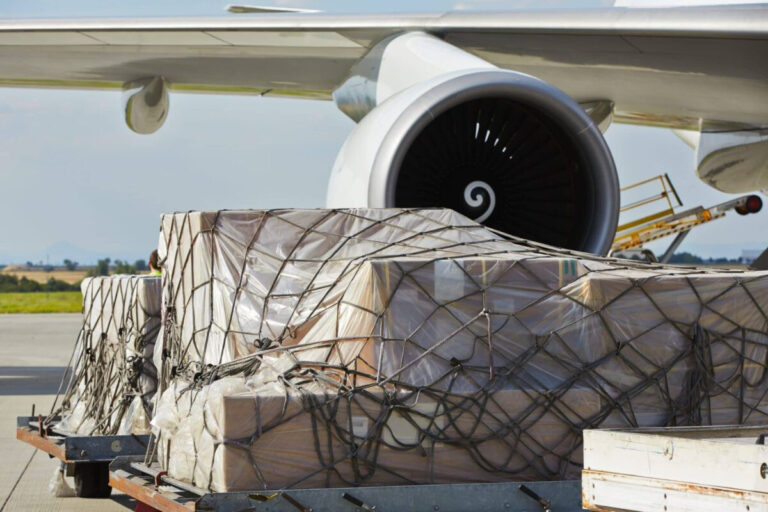
With the government of India’s willingness to detect budget 2025, industrial leaders call for strategic investments in the logistics sector to support commercial ambitions in India, enhance economic efficiency, and empower small and medium -sized companies (MSMES). With a $ 2 trillion export goal by 2030, achieving the goals shown in national logistical policy (NLP) will require bold political measures, expansion of infrastructure, and organizational simplification that enhances a smooth commercial ecosystem.
Gregory Juba Ble, President of UPS India and director of Movin Express, stressed the importance of logistical modernization in achieving India’s economic capabilities. “Investments in the logistical services sector can support India’s commercial goals, enhance economic efficiency, and encourage small and medium -sized companies to expand,” He said that highlighting the need for budget allocations that give priority to global efficiency and integration.
Critical year
The national logistical policy (NLP), which was launched in 2022, aims to reduce the costs of logistics services from 13-14 % of GDP to a 8 % global standard, and simplify trade and supply chains. However, achieving this goal requires continuous investment of non -advanced transportation corridors, digital shipping systems, and communication with the last inclination in emerging industrial areas.
Blai pointed out that simplifying the compliance procedures for export and reducing organizational costs will be necessary for logistics players to work efficiently and remain able to compete.
“To increase the strengthening of India’s position in the global markets, achieving the goal of national logistical policy, and reaching the goal of export of $ 2 trillion by 2030, the trend should be to simplify the compliance procedures for export and reduce the regulatory costs of logistics players,” He pointed out.
An organizational framework is more efficient, as well as allocating a larger budget for commercial infrastructure, which will enable smooth cross -border commodity movement while attracting international companies looking for cost -cost supply chain solutions.
MSMES empowerment
MSMES constitutes the backbone of the Indian economy, which contributes about 45 % of the total exports and 30 % of GDP. However, the lack of access to advanced logistical infrastructure hinders its ability to expand the scope of operations and competition worldwide.
When this challenge realizes, previous budgets have provided many MSME support programs, including credit plans and digital transformation initiatives. The industry now hopes to obtain more investments in access to capital and technology adoption, especially in level cities 2 and Tier 3.
Juba Blai confirmed this point by saying that “in the previous budgets, the government announced programs and initiatives to support small and medium companies, and we expect to continue this. We hope that MSMES will be empowered, especially in the cities of the level 2-3, with the adoption of capital and technology to compete in Global markets.
By developing regional logistical centers and improving transportation connection, the budget can open new growth methods for the projects of the melaesin in industrial centers and emerging manufacturing.
E -commerce and trade across borders
Creating rapid growth of e -commerce and online trade across the border new opportunities for companies, but also showcases organizational and operational deficiencies. While the e -commerce sector in India is expected to reach 350 billion dollars by 2030, its success depends on faster permits, improving the last inclination connection, and the ecosystem for smooth digital payment.
Bella stressed the need for measures that speed up e -commerce and simplify international transactions via the Internet, and stressed this, that, “We hope to see measures to accelerate e -commerce and simplifying online transactions across the border.”
E -commerce exports have emerged as a major empowerment factor for southern Indian modes, allowing them to reach global markets. However, in order to translate this into constant growth, the government must ensure faster clearances and the manager of technology, especially for small companies that transmit international trade for the first time.
Enhancing logistical health care services
Health and pharmaceutical care industries depend mainly on a strong logistical network, especially for time -sensitive charges such as vaccines, critical medical supplies and temperature sensitive drugs. PandeMic Covid-19 shows significant weaknesses in logistical healthcare services, which enhances the urgent need for the brochure and browning of specialized transportation. As India continues to expand its role as a global drug center, ensuring a smooth, effective and well -integrated ecosystem will be necessary to maintain the safety of the supply chain and meet local and international demand.
Industry leaders stressed the need to increase budget allocations to enhance logistical capabilities in the health care sector. BLE highlighted this urgency, saying: “The budget allocation of the health care sector, which depends greatly depends on a strong and integrated logistical network. This will guarantee the delivery of effective medical supplies and increase the total effectiveness of the sector to meet the requirements of medicines and patients.”
The strategic approach to logistical investment for healthcare must give the main areas to meet the current challenges. The expansion of the cold storage and logistical services controlled by temperature is necessary to meet the increasing demand for life -saving drugs and biology, ensuring that pharmaceutical products maintain their effectiveness throughout the transit. In addition, the simplification of customs clearances of medical imports and exports is necessary to prevent supply chain disorders and ensure a predictable flow without interruption of basic medical commodities.
Moreover, the use of PPPS partnerships can play a transformative role in enhancing delivery networks in the last mud, especially in rural and low -service areas. By enhancing cooperation between government initiatives and private sector expertise, logistical infrastructure can be expanded and updated, ultimately improving accessibility and reducing delay in the distribution of critical health care supplies.
Since India places itself as a leader in global pharmaceutical manufacturing and export exports, the targeted investments in health care logistics will not only enhance the efficiency of the supply chain, but also enhance the country’s ability to respond effectively to public health challenges. The next budget represents a pivotal opportunity to implement structural reforms and financial obligations that will form the future of the logistical health care sector in India, which guarantees flexibility and reliability in an increasingly complex global scene.
Politics recommendations
With the growth of budget expectation 2025, stakeholders in the industry emphasize the main fields that require urgent attention to enhancing economic growth and development. One of the main priorities is to invest in logistical infrastructure, especially focusing on promoting multimedia connection, progress in digitization, and implementing organizational reforms to effectively reduce trade costs. These initiatives are expected to simplify the movement of goods and improve efficiency in the supply chain.
In parallel, experts are defending stronger facilitation of e -commerce trade, with a focus on improving customs procedures to ensure more smooth online transactions online. By improving the digital framework and reducing bureaucratic obstacles, e -commerce can expand, providing greater opportunities for companies to reach global markets.
Healthcare logs also stands out as a critical sector that requires specialized attention. There is an invitation for the target financing to enhance the cold chain networks, simplify supply chains for medical commodities, and ensure the provision of basic health care products in time and safe.
Moreover, there is an increasing consensus on the need to support the digital transformation of small, small and medium enterprises (MSMES), especially in the emerging industrial centers in Level 2 cities and plane 3. Financial support and strategic digital initiatives can enable these companies to grow and compete in the growing digital and global market .
These recommendations reflect a comprehensive approach to care for economic flexibility and ensure the critical sectors obtain the resources needed to flourish in the coming years.
Pivotal budget
With India targeting $ 2 trillion of exports by 2030, the next budget is expected to set the basis for a modern, effective and competitive logistical sector worldwide. Strategic investments in multimedia, and facilitate digital trade, and regional infrastructure will be a key to canceling economic growth and enhancing commercial efficiency in India.
Goba Ble reflects a broader consensus in the industry as the efficiency of the supply chain and the modernization of logistics will be decisive to achieve economic aspirations in India. The government’s ability to address infrastructure gaps, simplifying organizational operations, and supporting MSMES will determine the extent of India’s success on its way to become a global trade force.


